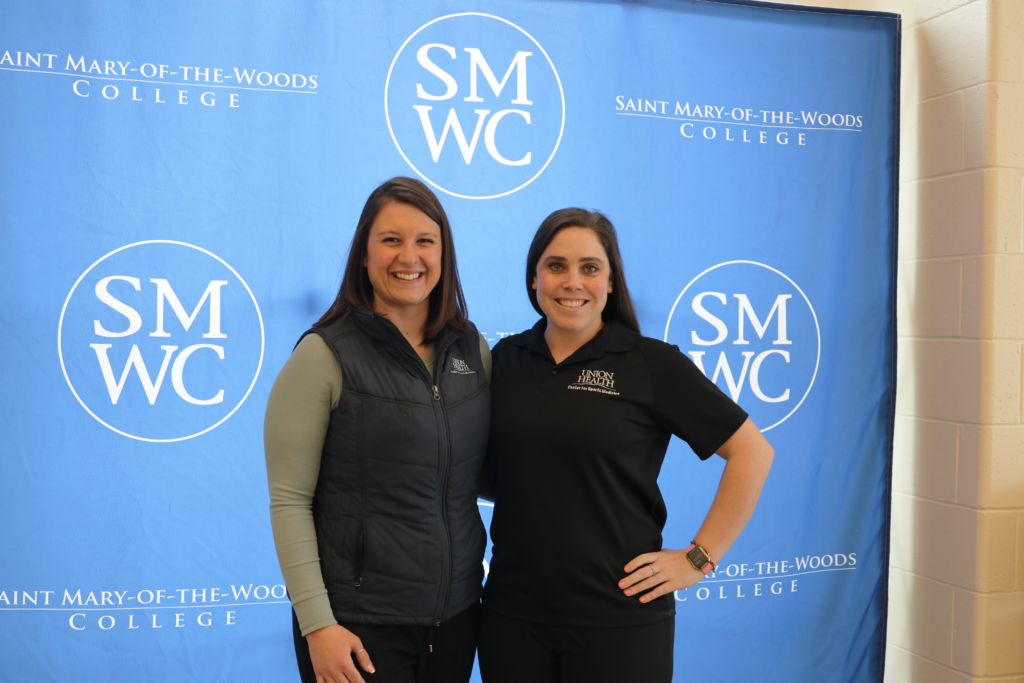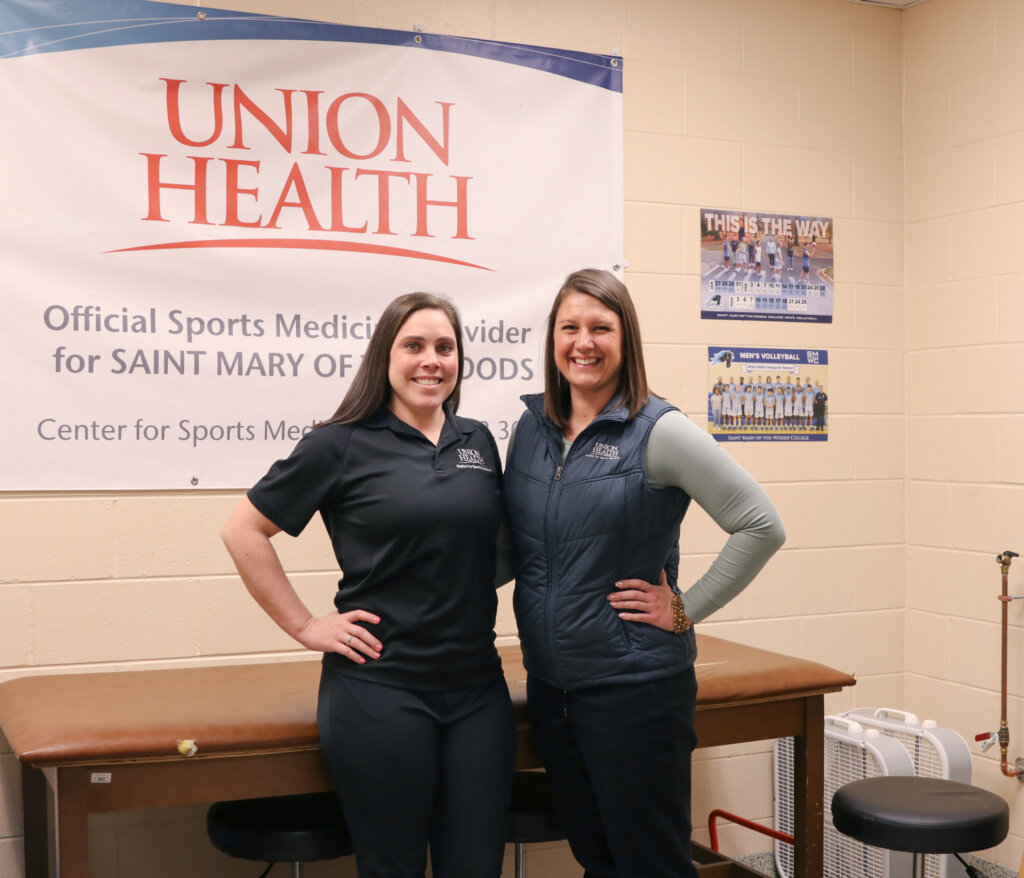In the world of college athletics, the average student-athlete receives help from an athletic trainer at least once a week during their season. The partnership between Union Hospital and Saint Mary-of-the-Woods College (SMWC) allows the Department of Athletics to have an athletic training staff present to provide care to student-athletes. With the total number of SMWC student-athletes reaching almost 300, an average of 30 different athletes visit Shannon Hamilton, MS, ATC, LAT, DAT, head athletic trainer for SMWC, and Stephanie Toubman, ATC, LAT, MAT, assistant athletic trainer for SMWC, every day in their office on campus.

From the outside, it may seem like the majority of their time is spent wrapping injuries and keeping athletes hydrated, but Hamilton shared that their routine serves with more complexity. “I think a big misconception about athletic trainers is that all we do is tape ankles, get teams their water and observe at sporting events, and although that is true, our days are completely booked.”
In addition, to their routine of prepping gear for team practices, Hamilton and Toubman meet with individual athletes for physical therapy, rehab appointments, injury treatment sessions and more. Although some days can be busier than others, Hamilton and Toubman explained that it doesn’t take away from their intention to provide the best care to student-athletes. “We really do our best to create a positive atmosphere for all the student-athletes we see. We want them to feel comfortable in here and that they can truly be themselves, whether they’re coming in for acute injury treatment or getting their nagging injury,” Hamilton said.
Since the training office sees numerous student-athletes, Hamilton and Toubman have a scheduling system to keep organized and ensure they provide the best care. “We require all athletes to make an appointment with us or to just communicate with us on what works best for them so we can work with their academic and practice schedules,” Hamilton said.
A unique feature of the treatment process that the SMWC training office has implemented is a focus on mental health. “We often see these students more than their families as we see them almost daily, so they open up to us. We work hard to make sure they know that they can trust us. We try to be mindful of the best routes if a student is struggling mentally or if they need help processing the time it takes to recover from surgery, an injury and even just the stress of college,” Hamilton said. Students are often given journal prompts and participate in yoga sessions to help with mental health. With this focus in the office, Hamilton and Toubman shared that they both strive to have a good work/life balance.

“Outside of working and doing homework as a full-time student in the doctorate program at ISU, I love hiking and spending time with friends. I like to cook, bake and hike,” Toubman said.
“I like to create a good home life with my boyfriend, his kids and our dogs. I love hiking, baking, cooking…I also have a love for yoga, as I recently finished my yoga instructor certification. Just like I don’t want students to only be identified by their sport, I don’t want to only be identified by my athletic training career.”
When it comes to a serious injury, the training staff thoroughly evaluates all possible options for the athletes. “We make sure that the athlete is aware of all their recovery options regarding a serious injury. The options can vary as we assess every athlete on a case-by-case basis. We, of course, make recommendations, but we also ensure that we take the path to recovery that the student-athlete wants. After working with us for two weeks, we navigate the situation with the athletes to choose the best route to recovery,” Hamilton shared. “Generally, we help as much as we can before making the call if we need to refer the athlete to a specialist. If the situation is an immediate acute injury that needs to be seen right away, we then proceed with the protocol to send them to other primary care facilities or a physician,” Toubman added.
In the field of athletic training, some days are busier and more intense than others, but Toubman and Hamilton agreed that they wouldn’t have it any other way. In conclusion, with the same consensus for both of them, Hamilton shared, “We both agree that watching a patient go from their worst time and going through the full recovery cycle and returning to play – it’s very rewarding!”

0 Comments